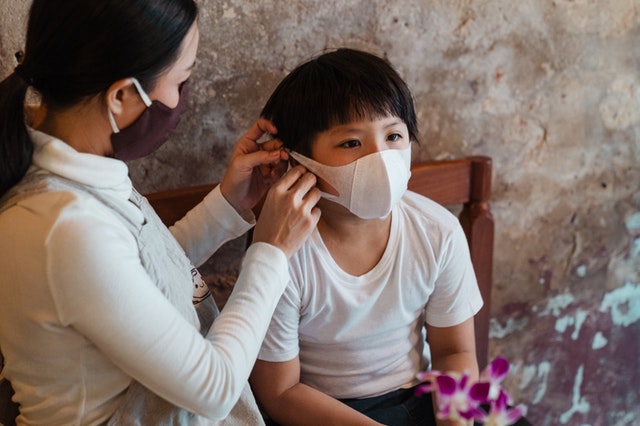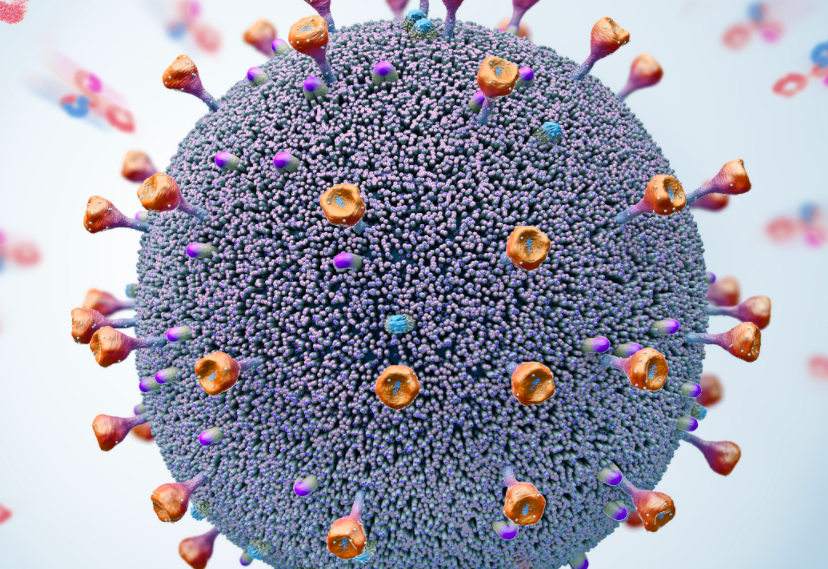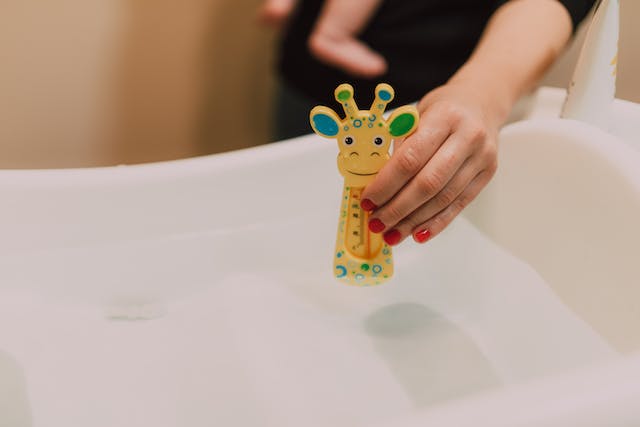It has been a year now since coronavirus hit the world. Our lifestyle turned literally upside down when the pandemic started; our plans changed; our survival strategies were changed in order to survive this pandemic. One of the major steps which the Central Disease Control and Prevention (CDC) asked us to make was wearing a mask.

Wearing a mask was extremely necessary one year back, and even now, when doctors are stating that many countries might be experiencing a second wave of the virus soon. Wearing the appropriate mask is literally the major step towards saving yourself from the virus.
Double masking, on the other hand, remains a controversial or rather confusing aspect. Many people say one mask that fits well is enough, where some prefer extra protection.
But is double masking really needed? Especially for the children, will double masking be helpful?
Must Read: Can children get Covid-19 vaccine yet?
The Central Disease Control and Prevention (CDC) recently stated that double masking is needed and not only for children but for everyone only in certain situations. Rather than emphasizing the quantities of the masks, one should be conscious about the quality of the mask even if they are double masking.
It is essential to create a barrier between your mouth and the air, and for that, it is really essential that you wear a mask. An n95 mask or any double or triple-layered cloth mask is the best option to opt for.
What are the most appropriate masks to use in the pandemic, and how to take care of them?
Another important thing you should consider while buying masks for anybody, be it for your children or yourself, is getting your hands on reusable or washable ones. A lot of waste generation, especially for the dumping of masks and plastic made medical gears like PPE kits, gloves have been recorded in the last year, and we do not want to make this world suffer more by not choosing a sustainable way of life. Hence selecting masks that are washable is a must. Also, make sure you wash your mask after each use in order to keep it clean and safe. Cleaning is not necessary because of the virus. It is necessary to kill the bacteria growing inside the mask as well.
We are wearing our masks for an extensive period while we are sweating. So all the sebum and sweat from our face, along with dust, is making an extremely favourable environment towards the inner side of the mask for the growth of numerous bacteria. These bacteria are harmful to our skin as they can cause rashes and acne on your face and can effectively irritate our skin. In order to stop this from happening, washing your mask with some mild soap is extremely important.
Now let’s focus on the guidelines provided by the Central Disease Control and Prevention (CDC) for the selection of proper masks.
Read More: Coronavirus: Pregnant women can transfer antibodies to their babies, study claims
Check the thickness.
A thin mask is not a useful one. Hence while buying a mask, check if your air is passing directly through the mask. If that is happening, then you need a thicker one for sure.
Masks should fit the face properly.
For children, the fit of the mask is really important. You should choose a mask that is proportionally fitting their face, cupping their cheeks and not keeping any gaps in between. If there are gaps, then the whole purpose of wearing a mask is hampered. Hence select a mask that is covering the mouth and nose properly.
Mask should have a nose pin.
In order to achieve a perfect fit, the mask should sit properly on the nose and not create a gap on the sides. For that, a nose pin is essential. Often n95 and surgical masks possess a nose pin, and hence the Central Disease Control and Prevention (CDC) as well as WHO says n95 and surgical masks are the best options.
Proper ways to double mask your kids as suggested by the Central Disease Control and Prevention (CDC) and when to double mask?
Double masking is not necessary all the time. If your kids are going to a crowded place where social distance maintenance is done properly that time double masking will be effective. In such times make sure you make your kid wear a disposable mask under a reusable cloth mask. This will not suffocate them and, at the same time, will keep the virus away effectively.
Other than that, make sure your kid is not touching the insides of the mask or displacing it while being in public either. Make sure they are comfortable wearing it and also sanitizing their hands before touching the mask.
 Children & teens can get COVID-19.
Children & teens can get COVID-19.
While fewer children have been sick with COVID-19 compared to adults, children can be infected with the virus that causes COVID-19, can get sick from COVID-19, and can spread the virus that causes COVID-19 to others. Children, like adults, who have COVID-19 but have no symptoms (“asymptomatic”) can still spread the virus to others.

Most children with COVID-19 have mild symptoms or have no symptoms at all. However, some children can get severely ill from COVID-19. They might require hospitalization, intensive care, or a ventilator to help them breathe. In rare cases, they might die.
CDC and partners are investigating a rare but serious medical condition associated with COVID-19 in children called Multisystem Inflammatory Syndrome in Children (MIS-C). We do not yet know what causes MIS-C and who is at increased risk for developing it.
Babies under 1 year old and children with certain underlying conditions may be more likely to have severe illness from COVID-19.
Babies under 1 year old might be more likely to have severe illness from COVID-19. Other children, regardless of age, with the following underlying medical conditions might also be at increased risk of severe illness compared to other children:
- Asthma or chronic lung disease
- Diabetes
- Genetic, neurologic, or metabolic conditions
- Sickle cell disease
- Heart disease since birth
- Immunosuppression (weakened immune system due to certain medical conditions or being on medications that weaken the immune system)
- Medical complexity (children with multiple chronic conditions that affect many parts of the body, or are dependent on technology and other significant supports for daily life)
- Obesity
This list does not include every underlying condition that might increase the risk for severe illness in children. As more information becomes available, CDC will continue to update and share information about risk for severe illness among children.
If your child has an underlying condition, make sure to discuss your child’s potential for getting very sick with their healthcare provider. Symptoms of COVID-19 are similar in adults and children and can look like symptoms of other common illnesses such as colds, strep throat, or allergies. The most common symptoms of COVID-19 in children are fever and cough, but children may have any of these signs or symptoms of COVID-19:
Also Read: Why are coronavirus cases falling in India
- Fever or chills
- Cough
- Nasal congestion or runny nose
- New loss of taste or smell
- Sore throat
- Shortness of breath or difficulty breathing
- Diarrhea
- Nausea or vomiting
- Stomachache
- Tiredness
- Headache
- Muscle or body aches
- Poor appetite or poor feeding, especially in babies under 1 year old
What you can do
Pay particular attention to:
- Fever (temperature 100.4 °F or higher)
- Sore throat
- New uncontrolled cough that causes difficulty breathing (for a child with chronic allergic/asthmatic cough, see if there is a change from their usual cough)
- Diarrhea, vomiting, or stomachache
- New onset of severe headache, especially with a fever
Keep track of who your child comes into close contact with
If your child or you were around someone who has COVID-19, someone from the health department may contact you for contact tracing. Speak with them and follow their advice.
Take steps to protect your child if you are sick and slow the spread of COVID-19.
If your child has symptoms and may have been exposed to the virus that causes COVID-19 or has been in an area where the virus is spreading,
- Keep your child home
- Call your child’s healthcare provider to discuss whether your child needs to be evaluated or tested for COVID-19. If you suspect that your child or someone they know has COVID-19 or has come into close contact with someone who has COVID-19, visit Coronavirus self-checker. This online tool will help you decide when to seek testing or medical care for your child.
- Protect yourself from COVID-19 while caring for your child
- Notify your child’s school that your child is sick. Also inform the school if your child has had a COVID-19 test and what the result is, if available.
- Review your child’s school (or other childcare facility) policies related to when a child who has been sick can return
- Bring your child back to school or other in-person activities only after they can safely be around others
If your child is sick but a healthcare provider tells you that your child does not have COVID-19, your child may still need to stay home. Discuss this with your child’s healthcare provider and review your child’s school or childcare facility’s policies to know when your child can return to school or other in-person activities.
Also Read: Vaccination drive: India’s one million shots in 6 days is world’s fastest rollout
In a medical emergency, bring your child to the emergency department.
Do not delay seeking emergency care for your child because you are worried about the spread of COVID-19. Emergency departments have infection prevention plans to protect you and your child from getting sick with COVID-19 if your child needs emergency care.
If your child is showing any of these emergency warning signs, seek emergency medical care immediately.
- Trouble breathing
- Pain or pressure in the chest that doesn’t go away
- New confusion
- Can’t wake up or stay awake when not tired
- Bluish lips or face
Read More: Coronavirus: Pregnant women can transfer antibodies to their babies, study claims
This list does not include all possible symptoms.
Call your child’s healthcare provider for any other symptoms that are severe or concerning to you.
Source: CDC
Related Topic:
How parents and teachers can help children in the fight against COVID-19 infection
Many children develop symptoms of respiratory or gastrointestinal distress like fever, cough, cold, throat pain, severe body ache, loss of appetite, abdominal pain, and weakness when they come in contact with the virus.
While the new year has brought some hope in the form of a vaccine, it is understood that inoculating a country as vast as India will take some time. Additionally, the vaccination drive will happen in phases, and there is still some time before it becomes available to children. Read More:

 Children & teens can get COVID-19.
Children & teens can get COVID-19.








